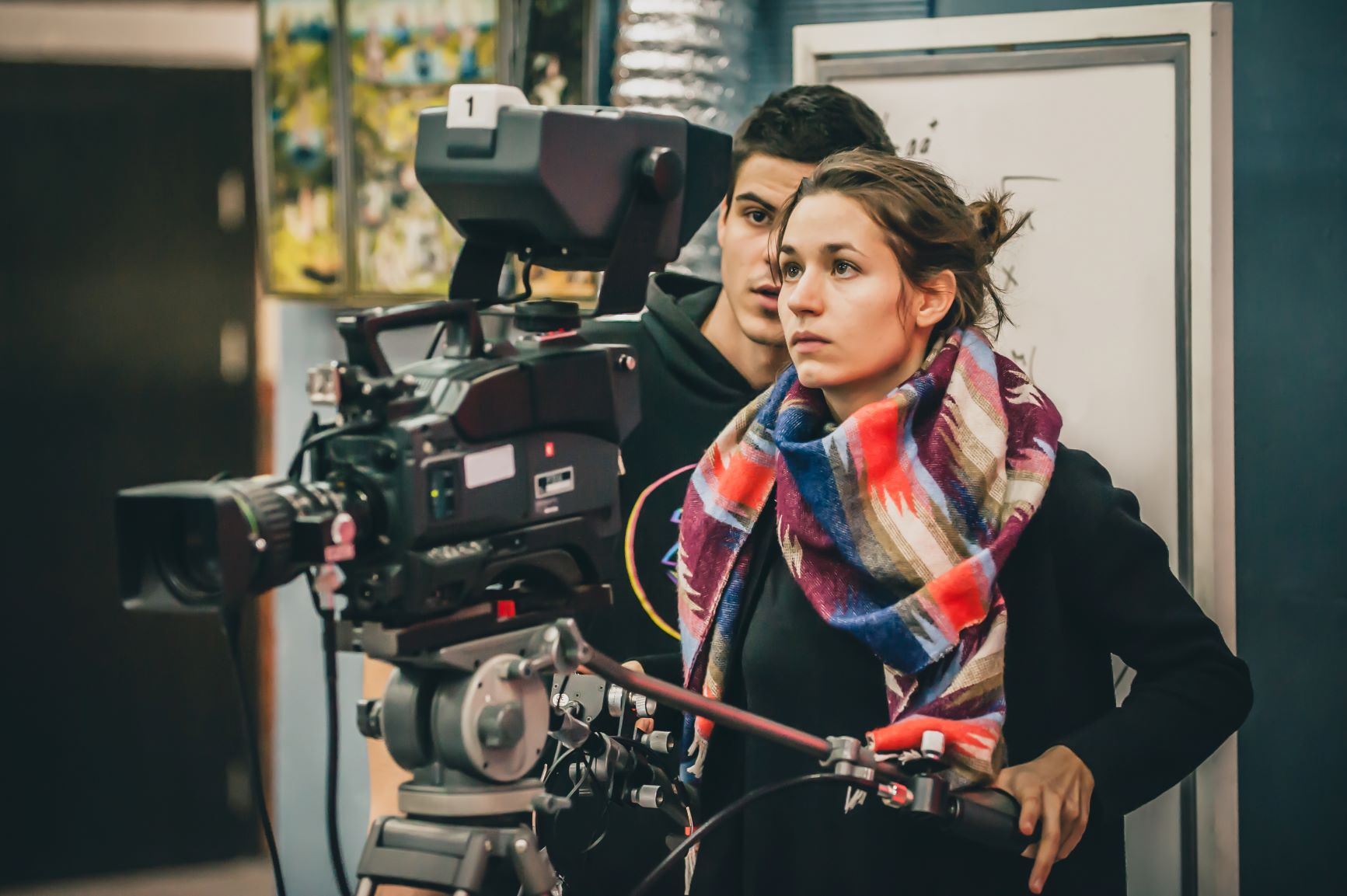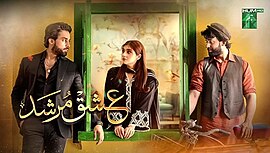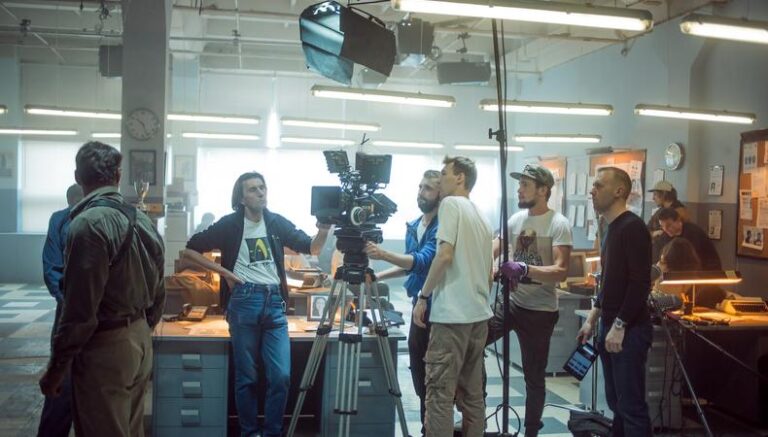VISUAL STORYTELLING TECHNIQUES IN FILM
In the world of cinema, storytelling is a craft that goes beyond words. It is the art of weaving narratives through visuals, a form of communication that transcends language barriers and leaves a lasting impact on the audience. Visual storytelling techniques are the heart and soul of filmmaking, and they play a pivotal role in captivating viewers. In this article, we will delve deep into the world of visual storytelling techniques in film, exploring the intricacies that make movies an unforgettable experience.
Read More: Acting Tips for Film
Table of Contents
Exploring Visual Storytelling Techniques In Film:
Here are some critical steps about visual storytelling techniques in film.
1. Composition and Framing:
One of the fundamental aspects of visual storytelling is composition and framing. How a scene is framed, and the placement of elements within the frame can profoundly influence the audience’s perception. Techniques such as the rule of thirds, leading lines, and framing within frames are commonly used to guide the viewer’s eye and convey emotions. Let’s explore composition and framing in detail:
Rule of Thirds:
The Rule of Thirds is a commonly used guideline in composition. The frame is segmented into a 3×3 grid, achieved by employing two evenly distributed horizontal lines and two equally spaced vertical lines. The primary subjects or focal points are ideally positioned at the points where these lines intersect or along the lines themselves.
Placing a subject off-centre in this way creates a balanced and visually pleasing composition. It can also help draw the viewer’s eye to the subject and give a sense of movement or direction.
Leading Lines:
Leading lines are components within the composition that direct the observer’s gaze toward a particular focal point or subject. These lines may manifest as tangible entities, such as streets, walkways, or barriers, or they may be implicitly established through the organisation of objects or structures.
The use of leading lines can add depth and visual interest to a shot. They can also suggest a sense of direction, reinforcing the narrative.
Framing within Frames:
Framing within frames is the technique of utilising elements in the scene to form an organic border around the subject. This effect can be achieved by capturing images through openings like doorways, windows, arches, or any other features that encircle the subject.
It adds depth and context to the shot, providing layers and layers of storytelling. It can also create a sense of intimacy or separation, depending on the context.
Symmetry and Balance:
Achieving symmetry in composition involves creating a sense of balance in the frame, where elements on one side mirror those on the other. This can be used to convey a sense of stability, order, or formality.
Asymmetry, on the other hand, can create tension and visual interest. It involves balancing the elements in the frame without mirroring them exactly. This can add a dynamic and engaging quality to a shot.
Depth and Layering:
Film is a two-dimensional medium, but skilled filmmakers use composition to create the illusion of depth. By placing objects in the foreground, middle ground, and background, they can add depth to the scene.
Layering elements within the frame allows for a richer visual storytelling experience. It can also be used to reveal information gradually, which can be particularly effective in building tension or suspense.
Visual Hierarchy:
Visual hierarchy in composition involves prioritising elements in the frame based on their importance to the story. The most critical elements should be emphasised through size, placement, or other techniques to ensure that the viewer’s attention is directed where it matters most.
Aspect Ratio:
The choice of aspect ratio (the width and height of the frame) can influence the composition. Different aspect ratios can create different visual experiences. For example, widescreen ratios like 2.39:1 are often used for epic, sweeping shots, while more square ratios like 1.85:1 can be used for a more intimate feel.
2. Lighting:
Lighting is a powerful tool for setting the mood and tone of a scene. Filmmakers use various lighting techniques, such as high-key and low-key lighting, to create drama, suspense, or romance. The use of natural light, practical lighting, and special effects can also enhance the storytelling experience. Here, we’ll explore the different aspects of lighting in film in detail:
Natural Light vs. Artificial Light:
Filmmakers can use natural light, which includes sunlight, moonlight, and practical light sources like lamps, candles, or fire. Natural light can create a realistic and atmospheric look. On the other hand, artificial lighting, such as studio lights or practical lighting controlled by the film crew, allows for more precise control over the lighting setup.
High Key vs. Low Key Lighting:
High-key lighting involves using bright and even lighting to eliminate shadows, creating a cheerful and inviting atmosphere. This is often seen in comedies or lighthearted scenes.
Low-key lighting, in contrast, uses a significant contrast between light and shadow to create a dramatic and mysterious ambience. It’s commonly used in film noir or suspenseful scenes.
Three-Point Lighting:
Three-point lighting is a classic lighting setup in filmmaking. It consists of three key elements:
Key Light: The primary source of light which illuminates the subject. It provides the most significant illumination and sets the direction of the lighting.
Fill Light: A softer light that fills in the shadows created by the key light, reducing contrast and making the subject more visible.
Backlight: Placed behind the subject, it creates a halo or rim of light, separating the subject from the background and adding depth to the shot.
Colour Temperature:
Light sources emit light with different colour temperatures measured in Kelvin (K). For example, daylight has a higher colour temperature (around 5600K), while tungsten lighting has a lower colour temperature (around 3200K). Filmmakers use colour temperature to set the mood and create a specific visual tone in their scenes.
Practical Lighting:
Practical lighting refers to using existing light sources within the scene to light the characters or objects. This could include table lamps, streetlights, or even the glow from a television. It adds authenticity to the scene and can be used to convey a character’s state of mind or the time of day.
Motivated Lighting:
Motivated lighting is when the source of light within a scene is explained or justified by the narrative. For example, if a character is reading a book by a lamp, the light source is motivated by the story, creating a sense of realism and immersion.
Contrast and Shadows:
The interplay between light and shadow can be used to create depth, texture, and drama. Contrast in lighting can emphasise a character’s emotions or reveal hidden information. Shadows can add mystery and tension to a scene.
Practical Effects and Gobos:
Filmmakers often use practical effects to manipulate light and create specific visual effects. Gobos (go-betweens) are stencils or templates placed in front of light sources to cast patterns or shapes, adding a layer of visual interest and symbolism to the scene.
Dynamic Lighting Changes:
Lighting can change dynamically within a scene to reflect character emotions or narrative developments. Gradual or sudden shifts in lighting can be used to convey shifts in mood, time of day, or plot twists.
Silhouettes and Chiaroscuro:
Filmmakers sometimes use silhouettes or chiaroscuro (strong contrast between light and dark) to create striking and visually memorable images. These techniques can be powerful in conveying emotional intensity or tension.
3. Colour Grading:
The choice of colour palette and colour grading can significantly impact the emotional resonance of a film. Warm colours like red and yellow can convey passion and energy, while cool colours like blue and green can evoke calmness and melancholy. The combination of colours can create a unique visual language for a film. Let’s delve into the details of colour grading:
Color Palette and Mood:
Filmmakers select a specific colour palette to set the overall mood and tone of the film. Warm colours like red and yellow can evoke passion, energy, and warmth, while cool colours like blue and green create a sense of calm, melancholy, or even coldness. The choice of colours can significantly influence how the audience perceives the story.
Colour Contrast and Balance:
The use of colour contrast can create visual interest and emphasis. By placing complementary or contrasting colours together, filmmakers can direct the viewer’s attention and create a sense of harmony or discord. Balancing these colours within a frame is essential for achieving a cohesive and visually pleasing look.
Colour Grading Software:
Color grading is often done using specialised software, such as DaVinci Resolve, Adobe Premiere Pro, or Final Cut Pro X. These tools allow filmmakers to adjust colour, brightness, contrast, and saturation, as well as create complex colour effects and manipulate the overall look of a scene.
Consistency Across Scenes:
Maintaining consistency in colour grading throughout a film is crucial. This ensures that the visual style remains coherent and doesn’t distract the audience with abrupt changes in colour, temperature, or mood. Filmmakers create colour-grading “looks” or presets to apply to different scenes or shots, maintaining a consistent visual language.
Day and Night Sequences:
Color grading is essential for day and night sequences. It can be used to create a visual contrast between the two, enhancing the viewer’s understanding of the time of day, mood, and atmosphere. Daytime scenes may have warm, vibrant colours, while night scenes often feature cooler, darker tones.
Aged or Vintage Looks:
Filmmakers can use colour grading to give a film an aged or vintage appearance. This can involve desaturating colours, adding film grain, or applying sepia or black-and-white filters to create a sense of nostalgia or historical context.
Highlighting Characters:
Color grading can be used to emphasise or de-emphasise characters within a frame. For example, a character’s wardrobe or surroundings can be color-graded differently to draw attention to them. This is particularly useful in character-driven stories.
Emotional Impact:
Colors can be used to evoke specific emotions in the audience. For example, warm colours might be used in romantic scenes to intensify the feeling of love, while desaturated or cool colours can enhance a sense of sadness or mystery.
Creative Effects:
Filmmakers can employ creative colour grading effects to add unique and stylised looks to their films. For instance, they might create a dreamy, ethereal atmosphere by adding a soft, pastel colour grading, or they can intensify action sequences with vibrant, high-contrast colours.
Storytelling Through Color:
Filmmakers often use colour grading to symbolise themes or character development. For example, a character’s journey may be reflected in a shift in colour grading from dark and moody to bright and vibrant, symbolising personal growth or transformation.
4. Camera Movement:
Camera movement is another crucial element of visual storytelling. Methods such as tracking shots, dolly shots, and handheld camera work have the potential to heighten the viewer’s engagement with the storyline.
The choice of camera movement can dictate the pace and rhythm of a scene, making it an essential storytelling tool. Here’s a brief overview of camera movement:
Tracking Shots: The camera moves smoothly along a predetermined path, typically on tracks or a dolly. Tracking shots can follow characters, create a sense of movement, or reveal information progressively.
Dolly Shots: Similar to tracking shots, dolly shots involve moving the camera closer to or away from the subject. They add depth and intensity to a scene, emphasising a character or object.
Handheld Camera: Filmmakers hold the camera by hand, creating a shaky and realistic feel. Handheld shots are often used to convey tension, chaos, or a documentary-style approach.
Pan and Tilt: Panning involves rotating the camera horizontally, while tilting is the vertical movement. These techniques can be used to reveal or follow subjects and provide context to the scene.
Zooms: Zooming involves changing the focal length of the lens to magnify or diminish the subject. Zooms can add emphasis, create suspense, or enhance a character’s emotional state.
Steadicam: A Steadicam is a body-mounted camera stabiliser that allows for smooth and fluid movement. It can be used for dynamic, long takes and adds a unique sense of immersion to the scene.
Crane Shots: A camera is mounted on a crane or jib, offering sweeping, high-angle shots. Crane shots can create a grand perspective and are often used in establishing scenes.
Aerial Shots: Aerial shots involve using drones or helicopters to capture scenes from above. They provide a bird’s-eye view and are helpful in depicting vast landscapes or settings.
5. Visual Effects (VFX):
Advancements in technology have opened up new avenues for visual storytelling. Visual effects, or VFX, enable filmmakers to create fantastical worlds and creatures that immerse the audience in the story. Techniques like green screen compositing and CGI have revolutionised the way stories are told on the big screen.
Visual Effects (VFX) is a pivotal component of modern filmmaking, encompassing the use of digital technology to create and manipulate visuals in post-production. VFX can be employed to achieve various outcomes, such as bringing fictional creatures to life, altering the environment, simulating dangerous stunts, and even changing the look of actors or objects. It extends the boundaries of storytelling by enabling filmmakers to craft visually captivating and imaginative scenes that would be otherwise impossible or impractical to produce in real life. VFX plays a crucial role in enhancing the visual impact and storytelling capabilities of contemporary cinema.
6. Sound Design:
While primarily an auditory element, sound design is integral to visual storytelling; sound effects, music, and dialogue contribute to the emotional impact of a scene. The synergy between visuals and sound can elevate the storytelling to new heights. Here’s a more detailed explanation:
Sound Effects: Sound designers use various sound effects, both recorded and synthesised, to create aural elements that match the visuals on screen. This includes sounds like footsteps, gunshots, doors creaking, and more. Sound effects enhance the realism and immersion of the film.
Foley: Foley artists create and record sounds that cannot be captured during filming. This includes adding subtle sounds like rustling clothes, footsteps on different surfaces, and even the handling of objects. Foley adds depth and detail to the audio track.
Music: Film composers or music supervisors select and create music to underscore the emotional and narrative aspects of a film. Music can evoke feelings, set the mood, and enhance the storytelling. It is a powerful tool for conveying the film’s themes and character emotions.
Dialogue: Sound design also involves the careful management of dialogue. This includes recording clean and clear dialogue during production and then editing and mixing it in post-production to ensure it is intelligible and fits seamlessly into the film.
Ambient Sound: Ambient sound or room tone is added to create a sense of place and atmosphere. It can be the sound of wind, traffic, or birds chirping, and it helps anchor the audience in the film’s setting.
Sound Mixing: Sound designers and mixers balance all these elements, adjusting volume, placement, and effects to create a cohesive and dynamic soundscape. The mix ensures that the audience can hear and feel the film in the intended way.
Emotional Impact: Sound design plays a significant role in conveying the emotions of the characters and the overall mood of the film. It can intensify suspense, heighten drama, and evoke empathy from the audience.
Temporal and Spatial Effects: Sound design can manipulate time and space through techniques like time warping, echoes, and reverberation. These effects contribute to storytelling and immersion.
Non-Diegetic Sound: Non-diegetic sounds are those that exist outside the story world and are not heard by the characters but are meant for the audience. This can include voice-over narration or an orchestral score that adds depth and meaning to the film.
Soundscapes: Sound designers create soundscapes that define the world of the film. These soundscapes immerse the audience in the setting and help them connect with the characters and story.
7. Editing:
Film editing is where the magic truly happens. It involves selecting the best shots, arranging them in a coherent sequence, and applying transitions. The pace and rhythm of the editing process are crucial in conveying the story’s tension, excitement, or calmness. Here’s a more detailed explanation:
Assembly and Selection: The first step in editing is to assemble all the footage shot during production. The editor reviews all the takes and selects the best ones for each scene based on factors like performance, composition, and technical quality.
Sequencing: After selecting the best shots, the editor arranges them in a sequential order to create the overall structure of the film. This process involves determining the timing, pacing, and flow of the narrative.
Transitions: Editors use various transitions, such as cuts, fades, dissolves, and wipes, to link one shot or scene to another smoothly. Transitions can indicate the passage of time, change in location, or shifts in the narrative.
Rhythm and Pace: Editing significantly influences the rhythm and pace of a film. The timing of cuts and the length of shots can be manipulated to create tension, excitement, or calmness. Fast-paced editing may be used for action sequences, while slow editing can emphasise emotional moments.
Montages: Editors use montages to condense time or convey information quickly. A montage is a series of shots that convey a passage of time or a sequence of events in a condensed form, often set to music.
Parallel Editing: This technique involves cutting between two or more storylines or locations to build suspense or draw connections between different parts of the narrative.
Continuity Editing: Editors ensure that the visual and narrative continuity is maintained throughout the film. This includes matching actions, eyelines, and screen direction to create a seamless viewing experience.
Sound Editing: In addition to visual editing, the audio elements, including dialogue, sound effects, and music, are edited and synchronised to match the visuals. Sound editing plays a crucial role in creating a cohesive audio-visual experience.
Colour Grading: Editors may also be involved in the colour grading process, where the colour and tone of the footage are adjusted to achieve a consistent and desired look throughout the film.
Visual Effects Integration: If the film involves visual effects, editors work to seamlessly integrate the VFX elements into the shots, ensuring they look natural and fit within the scene.
Narrative Enhancement: Editors are storytellers themselves. They make creative decisions about what to include, omit, or emphasise to enhance the narrative. They help shape the characters, plot, and themes of the film.
Feedback and Revisions: The editing process typically involves collaboration with the director and other key team members. Feedback and revisions are made to refine the film and ensure it aligns with the director’s vision.
Conclusion
Visual storytelling techniques in film are a mesmerising blend of art and technology. They allow filmmakers to evoke emotions, convey messages, and transport audiences to different worlds. From composition and lighting to camera movement and visual effects, every aspect plays a pivotal role in crafting a compelling narrative.
As you continue to explore the world of film, remember that storytelling is not limited to words. Visual storytelling techniques enrich the cinematic experience, making it a powerful medium for communication and entertainment. Whether you’re a filmmaker, a film enthusiast, or simply a curious soul, understanding these techniques can deepen your appreciation for the art of cinema and the stories it tells. So, dive into the world of visual storytelling and let your imagination run wild on the big screen.
For more updates follow us on Google News:








2 Comments